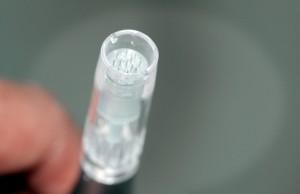Why is microneedling big in NYC for smoother skin?
Microneedling does exactly what it sounds like, tiny needles enter the outer layer of your skin, causing 2 main effects:
1. microscopic injuries
2. temporary tunnels
These tiny injuries help to boost the amount of collagen and elastin in your skin and the tunnels or channels that are left by the needle paths allow topical therapies to better penetrate the skin, thus enhancing their effects.
The popularity of microneedling has exploded in recent years because it is effective for a variety of conditions, it doesn’t require a prolonged recovery, and it’s relatively painless. Here in NYC, many of my clients are busy professionals that are unable to take a week or more off from work yet they want to undergo proven treatments to look their best. The needling procedure may leave them with 2-3 days of redness and swelling so it can be done before the weekend and it can be repeated several times, usually once a month for 3-4 months to get the best result.
The advantages of microneedling include: can be safely performed on darker skin types (as opposed to many skin smoothing lasers that may not be used on dark skin), is a relatively quick process (can be performed in 15 minutes), and it is not very uncomfortable (many people have told me that it tickles).
Reasons to have microneedling
Microneedle tip with tiny motorized skin needles
What research tells us about microneedling
There are several studies in the medical literature that support the benefits of microneedling. One study in the Journal of Cosmetic Dermatology in 2014 showed at least 50% in acne scars in Asian patients after 5 needling sessions. Another study in the Journal of Aesthetic Cutaneous Surgery in 2014 compared microneedling combined with topical vitamin C versus topical PRP for acne scarring and the PRP group showed a higher satisfaction rate.
It makes sense that the evidence for microneedling for reduction of acne scarring would carry over to skin rejuvenation and controlled studies are currently underway to quantify these benefits.
How often is microneedling done
I recommend that most patients have 3-5 sessions spaced one month apart. This seems to provide the best results. After the initial sessions, many of my clients will have a treatment once or twice a year to maintain a smooth skin texture and to prevent wrinkles. When I apply PRP to the skin at the same time as microneedling, taking advantage of your body’s own growth factors, the results seem to be even better.
Microneedling can also be combined with laser skin treatments for a more rapid and dramatic rejuvenation, particularly in those with more significant wrinkles, fine lines, and acne scarring.
Why you shouldn’t do microneedling at home
You can find microneedling devices and dermarollers (rollers, motorized pens, needle stampers) for sale on Ebay and Amazon. The two biggest biggest problems with using these devices at home are:
1. Risk for infection- medical offices are set up for sterile medical procedures, your home is not.
2. Inconsistent results- non-medical grade rollers and needling pens can have needles that penetrate too deep or too shallow, leading to poor results or ineffective treatments. I use an FDA-cleared motorized microneedling pen that is classified as a medical device.



